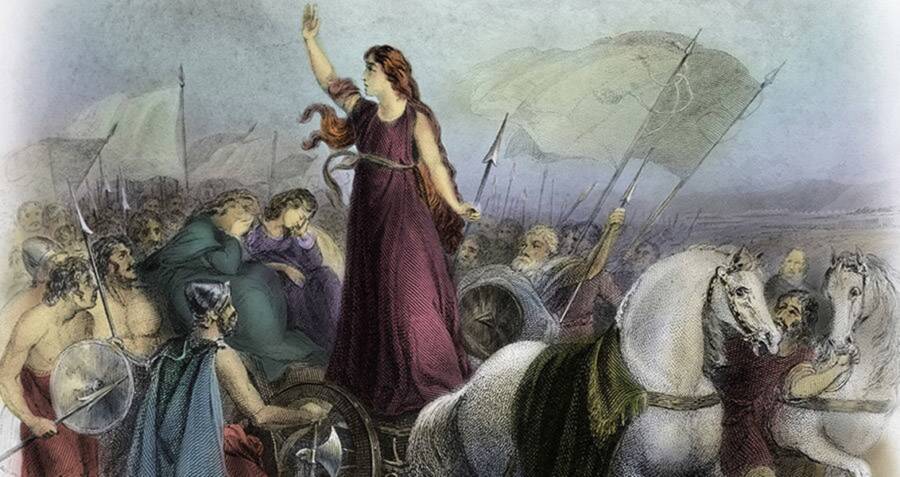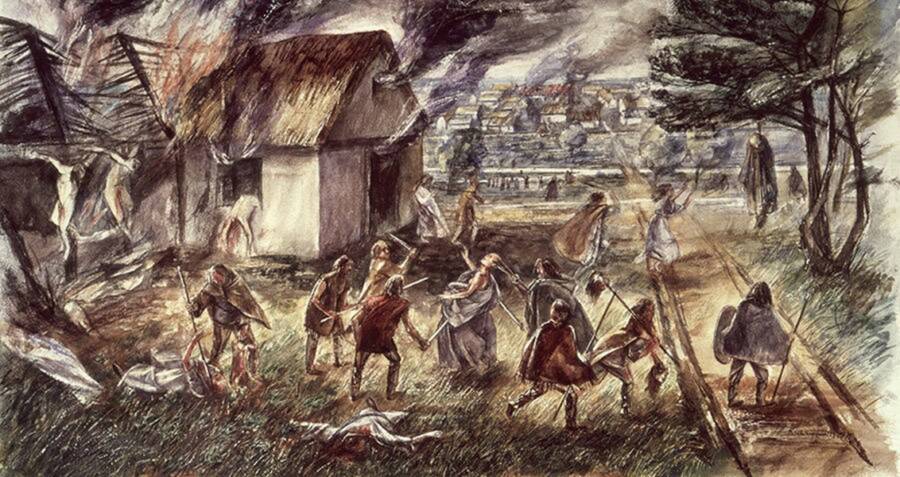Queen Boudica And Her Epic Revenge Against The Romans

Culture Club/Getty ImagesQueen Boudica led an uprising against the Roman Empire after her land was taken, she was flogged, and her daughters were raped.
Queen Boudica was a fearless Celtic tribal queen whose story of revenge against the ancient Romans in Britain is so legendary that it’s still being told today.
Boudica was the wife of Prasutagus, king of the eastern tribe of Britons known as the Iceni, who the Romans allowed to continue ruling his land after their conquest of southern England in the first century A.D. Prasutagus declared in his will that upon his death half of his land would be given to the then-Roman Emperor Nero, and the other half would be left to his wife, Boudica, and their two daughters.
This, however, was not what the Romans had in mind. When they allowed client kingdoms to continue ruling themselves under Roman authority, the client status lived only as long as the life of the ruler who agreed to the arrangement. Upon their death, the territory would then belong to the Romans entirely; they were not allowed to split their land up.
When the Romans came to claim Prasutagus’ kingdom and were told that half of his kingdom had been given to Boudica and his daughters, the Roman governor forcibly annexed his kingdom and Roman soldiers were sent to punish and humiliate the Iceni queen. In Annals, Roman historian Tacitus wrote of the incident:
“Kingdom and household alike were plundered like prizes of war, the one by Roman officers, the other by Roman slaves. As a beginning, his widow Boudicca was flogged and their daughters raped.The Icenian chiefs were deprived of their hereditary estates as if the Romans had been given the whole country. The king’s own relatives were treated like slaves.”

Museum of London/Heritage Images/Getty Images
Reconstruction of the massacre by Boudica’s forces at Londinium in 60 AD.
After nearly two decades of abuse at the hands of the Romans, the Britons had reached their breaking point and Queen Boudica was not one to take such outrages quietly. She gathered people from tribes all over the territory who were also thirsty for revenge against the Roman Empire. One such tribe was the Trinovantes in the south, who kept a secret stockpile of weapons that was later used by Boudica’s tribal army made up of as many as 100,000 warriors.
They first struck Camulodunum — the capital of Roman Britain at the time — where they quickly burned through the city and its people, destroying all its buildings including an unfinished temple to the emperor Claudius who had first formalized the conquest of the Britons in 43 A.D.
Boudica’s blood-thirsty army plowed through more cities — including Londinium, now modern-day London — where the rebels massacred populations and wreaked havoc throughout Roman Britannia. Her forces were unstoppable, slaughtering even the fierce cavalry of Roman Commander Quintus Petilius Cerialis with ease.
The rebels tortured and mutilated civilians, impaled them on skewers, and crucified them. It’s estimated that Boudica’s army killed around 80,000 people during the rebellion, most of whom were Romans colonists, though some of them were pro-Roman Britons as well.
Her revenge rampage was finally stopped in 61 A.D. by the Roman Governor Gaius Suetonius Paullinus. Vastly outnumbered by as many as 10-to-1, Paullinus and the Roman soldiers under his command used a mix of strategic positioning and the renown Roman discipline to slowly reduce the numbers of the rebellious Britons. When the Britons suddenly broke into a retreat, they were trapped by the crescent formed from their own baggage train and slaughtered by the advancing Romans, with upwards of 80,000 of Boudica’s army being slain.
It’s unclear how Boudica herself died — she is said to have poisoned herself — but one thing is for certain: the Romans paid a heavy price for their crimes against her and her people, making it one of history’s greatest revenge stories.




